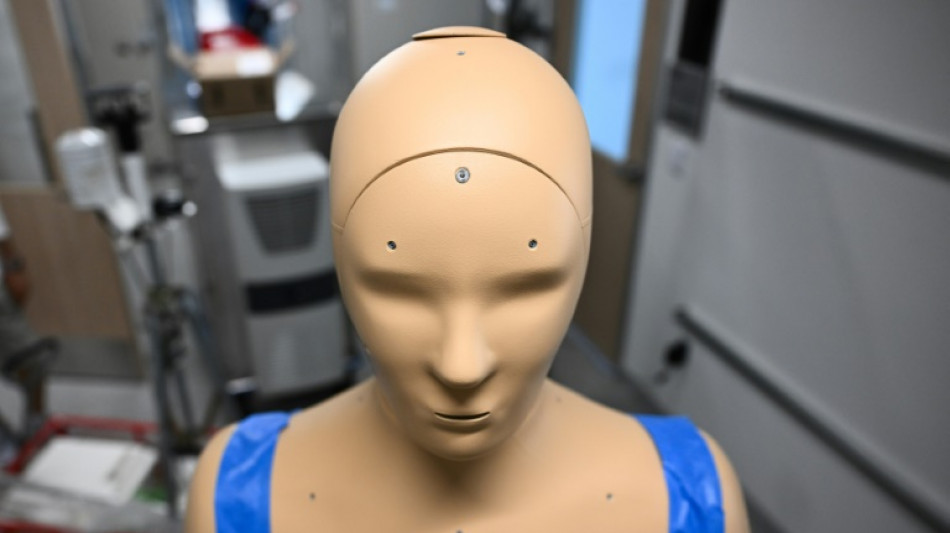
-
 Scandic Trust Group strengthens sales network with First Idea Consultant
Scandic Trust Group strengthens sales network with First Idea Consultant
-
Dead famous: Paris puts heritage graves up for grabs
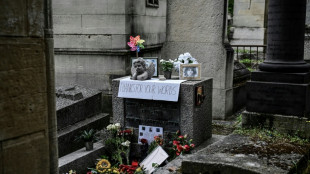
-
 UK grandmother on Indonesia death row flies home
UK grandmother on Indonesia death row flies home
-
Former NFL star Brown extradited from Dubai to face trial in shooting - police

-
 Chile presidential hopeful vows to expel 'criminal' migrants to El Salvador
Chile presidential hopeful vows to expel 'criminal' migrants to El Salvador
-
Trump event paused in Oval Office when guest faints

-
 NFL Colts add Sauce to recipe while Patriots confront Baker
NFL Colts add Sauce to recipe while Patriots confront Baker
-
Home owned by Miami Heat coach Spoelstra damaged by fire

-
 Tesla shareholders approve Musk's $1 trillion pay package
Tesla shareholders approve Musk's $1 trillion pay package
-
World leaders launch fund to save forests, get first $5 bn
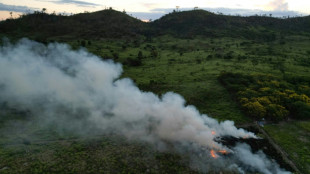
-
 Villa edge Maccabi Tel Aviv in fraught Europa League match
Villa edge Maccabi Tel Aviv in fraught Europa League match
-
Protests as Villa beat Maccabi Tel Aviv under tight security

-
 US Supreme Court backs Trump admin's passport gender policy
US Supreme Court backs Trump admin's passport gender policy
-
Japan boss Jones backs Farrell to revive Ireland's fortunes

-
 MLB Padres name former reliever Stammen new manager
MLB Padres name former reliever Stammen new manager
-
'Grand Theft Auto VI' video game delayed again until Nov. 2026

-
 Martino returns as head coach of MLS Atlanta United
Martino returns as head coach of MLS Atlanta United
-
Hamilton dismisses Ferrari exit claims

-
 Musetti keeps ATP Finals hopes alive, joins Djokovic in Athens semis
Musetti keeps ATP Finals hopes alive, joins Djokovic in Athens semis
-
England boss Borthwick wants 'brilliant' Marcus Smith to shine against Fiji

-
 Piastri says he is confident he can recover and win drivers' title
Piastri says he is confident he can recover and win drivers' title
-
Verstappen admits he may need a bit of 'luck' to haul in rivals in title race

-
 Kazakhstan to join Abraham Accords as Trump pushes Mideast peace
Kazakhstan to join Abraham Accords as Trump pushes Mideast peace
-
'Moral failure': Leaders seek to rally world at Amazon climate talks

-
 UN Security Council votes to lift sanctions on Syrian president
UN Security Council votes to lift sanctions on Syrian president
-
Democratic giant, trailblazer and Trump foe Nancy Pelosi to retire

-
 World leaders ditch ties at sweaty climate summit
World leaders ditch ties at sweaty climate summit
-
Dallas Cowboys' Marshawn Kneeland dies at 24

-
 Rally outside Rockstar against GTA studio's 'union busting'
Rally outside Rockstar against GTA studio's 'union busting'
-
McLaren boss says would rather lose title than issue team orders

-
 Sabalenka, top WTA stars urge Slams to revive 'stalled' negotiations
Sabalenka, top WTA stars urge Slams to revive 'stalled' negotiations
-
5 killed in Afghan-Pakistan border fire despite peace talks: official
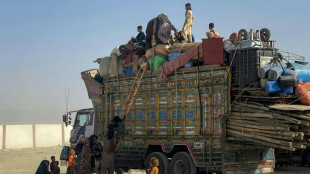
-
 Trump unveils deals to lower costs of some weight-loss drugs
Trump unveils deals to lower costs of some weight-loss drugs
-
Controversial Canadian ostrich cull order will go ahead

-
 Mexico's Sheinbaum to boost reporting of sexual abuse after being groped
Mexico's Sheinbaum to boost reporting of sexual abuse after being groped
-
Zuckerbergs put AI at heart of pledge to cure diseases

-
 Crypto giant Coinbase fined in Ireland for rule breaches
Crypto giant Coinbase fined in Ireland for rule breaches
-
Lawson relieved as he reveals FIA support following Mexican near-miss

-
 US set for travel chaos as flights cut due to govt shutdown
US set for travel chaos as flights cut due to govt shutdown
-
Sabalenka and Pegula book their spots in WTA Finals last four

-
 'Our brother-in-law': Arab world embraces New York's new mayor
'Our brother-in-law': Arab world embraces New York's new mayor
-
France boss Deschamps would prefer to 'avoid playing' on Paris attacks anniversary

-
 Pegula sweeps past Paolini to reach WTA Finals last four
Pegula sweeps past Paolini to reach WTA Finals last four
-
Bolivian ex-president Anez leaves prison after sentence annuled

-
 Stocks slide as investors weigh data, interest rate cuts
Stocks slide as investors weigh data, interest rate cuts
-
UN says 2025 to be among top three warmest years on record
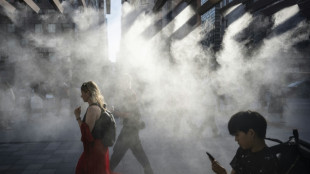
-
 Fleetwood and Lowry lift each other into Abu Dhabi lead
Fleetwood and Lowry lift each other into Abu Dhabi lead
-
Fleetwod and Lowry lift each other into Abu Dhabi lead

-
 New Zealand make changes after Barrett brothers' injuries as Scotland drop Van der Merwe
New Zealand make changes after Barrett brothers' injuries as Scotland drop Van der Merwe
-
Dallas Cowboys' Marshawn Kneeland dies at 24: franchise


A sweaty robot may help humans understand impact of soaring heat
What happens to the body when a human gets heatstroke? How can we protect ourselves in a warming planet? To answer these burning questions, Arizona researchers have deployed a robot that can breathe, shiver and sweat.
The southwestern state's capital Phoenix is currently enduring its longest heat wave in history: on Friday, the mercury exceeded 110 degrees Fahrenheit (43 degrees Celsius) for the 22nd day in a row, an ominous demonstration of what's to come in a world impacted by climate change.
For humans, such heat represents a potentially lethal threat, one that is still not fully understood. But for ANDI -- a one-of-a-kind humanoid robot at Arizona State University -- it's a lovely day out.
"He's the world's first outdoor thermal mannequin that we can routinely take outside and ... measure how much heat he is receiving from the environment," mechanical engineering professor Konrad Rykaczewski told AFP.
ANDI is "a very realistic way to experimentally measure how a human person responds to extreme climate" without putting people themselves at risk, Rykaczewski says.
At first glance, ANDI -- which stands for Advanced Newton Dynamic Instrument -- resembles a simple crash-test dummy.
But its epoxy/carbon fiber skin conceals a treasure trove of technology, such as a network of connected sensors that assess heat diffused through the body.
ANDI also has an internal cooling system and pores allowing it to breathe and sweat. There are 35 independent thermal zones and, like humans, the robot -- which cost more than half a million dollars to build -- sweats more from its back.
Until now, only a dozen or so mannequins of this type existed, and none of them could venture outdoors.
They were mainly used by sports equipment manufacturers to test their technical clothing in thermal chambers.
- Hyperthermia, a 21st century condition -
Researchers hope the robot will provide a better understanding of hyperthermia -- that is, when a body overheats, a condition that is threatening a growing proportion of the world's population as a result of global warming.
For obvious ethical reasons, "nobody measures core temperature increase while somebody's getting heatstroke," says Rykaczewski. But the effects of heat on the human body are still not fully comprehended. ANDI gives researchers a chance to understand.
Accompanied by MaRTy (Mean Radiant Temperature), a mobile weather station that measures the heat reflected by the buildings around it, the robot is taking its first steps outside in Phoenix -- an ideal laboratory in which to prepare for tomorrow's climate.
"How do we change what we wear? How do we change our behavioral patterns, and adjust them to temperatures that are of this order of magnitude?" says Rykaczewski.
Andi is also infinitely reprogrammable. The research team can make "digital twins of the mannequin to look at different segments of the population," explains Jennifer Vanos, a climatologist involved in the project.
For example, the older you get, the less you sweat. Young people will need different protection from athletes or people in poor health. With ANDI, scientists can simulate the thermoregulatory mechanisms specific to each individual.
- Phoenix, test lab for the future -
They can also test the robot in a variety of situations. For example, Phoenix is dry -- what about humid heat? How does the human body cope in hot winds?
Their research will be useful for designing heat-resistant clothing, rethinking urban planning and protecting the most vulnerable.
In Phoenix, which opens dozens of cooling centers for the homeless every summer, their findings could guide the actions of social workers.
"How long should a person stay in a cooling center to cool off, so that their core temperature goes down to a level that's safe again? We can answer that question with Andi," says Vanos.
The team also dreams of developing low-cost sensors to be used on building sites to adjust working hours according to the heat actually felt on site and the health of the workers -- rather than based on general weather conditions.
That could be a "step towards better safety than just these blank recommendations per city, per state, per country," Rykaczewski says.
Such specific, tailored solutions could have global impacts, redrawing entire cities.
"If the future of Paris looks like Phoenix now, we can learn a lot about how do we design buildings," says Rykaczewski.
P.Martin--AMWN

